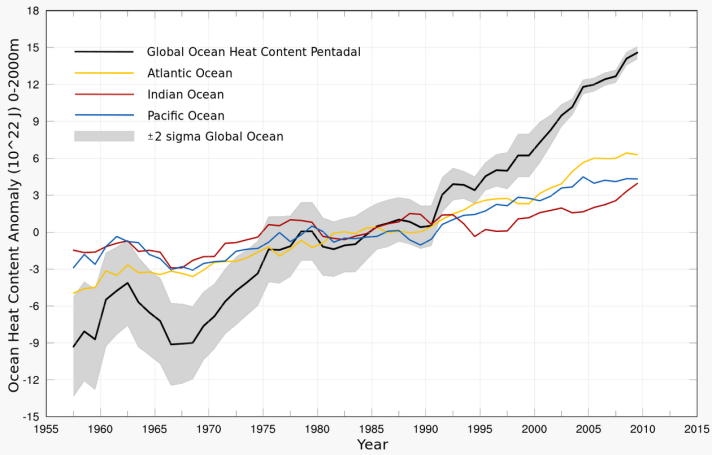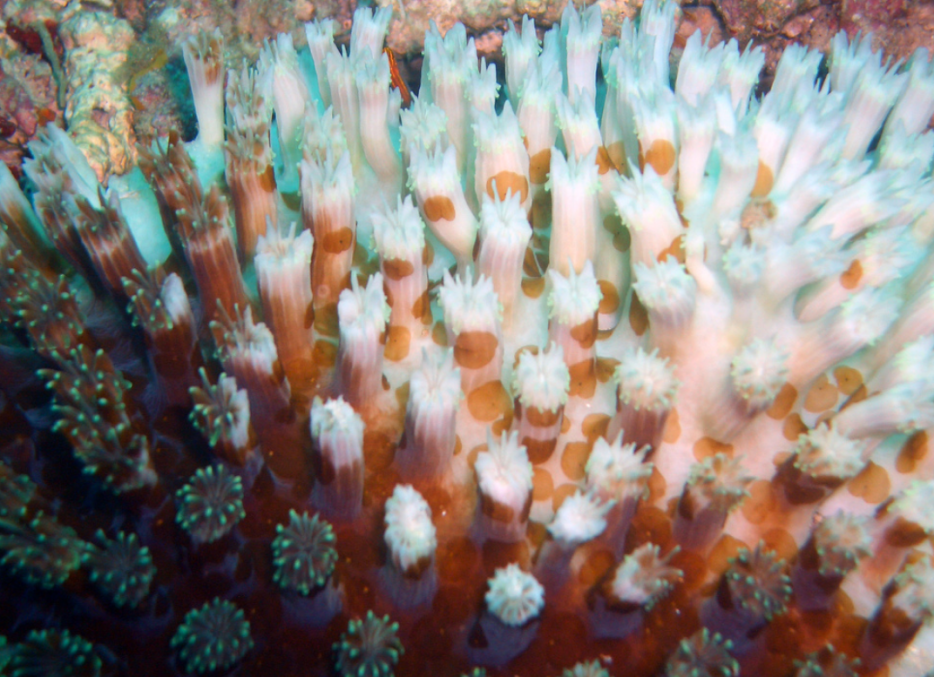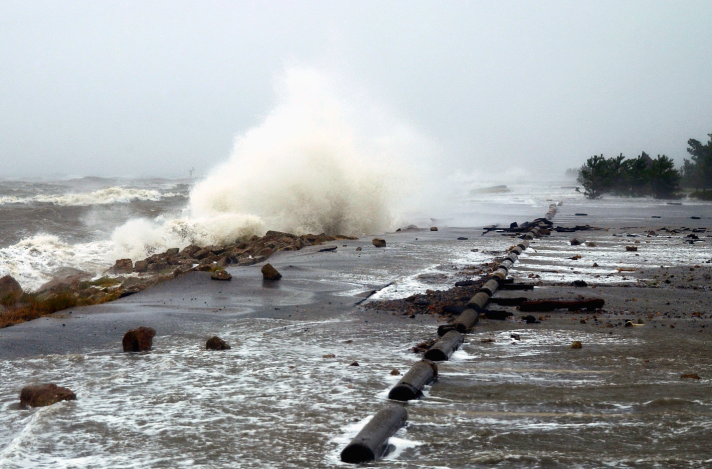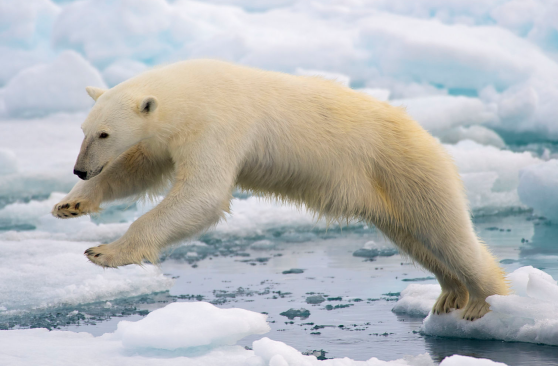Regardless of what the current president says about global warming, there is cold hard facts that proves climate change is prevalent. The EPA has over forty data contributors from different government agencies that provide indicators of the cause and effects of climate change. These indicators effect the oceans in detrimental ways like thermal stress, (“stress in a body or structure due to inequalities of temperature”), and the warming of the oceans.
Green House Gasses
Green house gases such as carbon dioxide have contributed to the warming of the oceans and increased in the world sense the industrial era. From 1990-2010 gas emissions cause by humans have increased by 35%. Electricity generation is the worlds largest contribute of emissions followed by transportation. Climate forcing, which is a change in the earth’s energy balance that results in a warming (in this case) or a cooling effect on the climate. This warming affect heats up the ocean and leads to a negative result.

“Greenhouse Gas Summary” by Wikimedia Commons under CC by 2.0
Increased green house gases cause something called the “green house effect“-when the atmosphere traps heat radiating from earth toward space, which results in warming of the oceans and melting glaciers. When the glaciers melt, it increases the sea level which adds to the ocean that is already expanding.
Tropical Storm Cycling
Tropical storms like hurricanes arise from heat energy that is obtained from the ocean. Because there is so much heat energy from the warming ocean, the past 20 years tropical storms have increased in the Carabbean, Atlantic, and the Gulf of Mexico. The intensity of the storm is related to the sea surface temperature specifically in the tropical Atlantic.

“Ocean Heat Content” by Wikimedia Commons under CC by 2.0
The figure above shows the Global Ocean Heat Content Pentadal, Atlantic, Indian,and Pacific oceans and the increase of Ocean content measured in the energy unit of Jules versus year. This long term trend shows that that the oceans have increases the heat energy sence 1955.
How is the warming ocean impacting the marine life?
One of the most vulnerable organism that is impacted is the coral. Higher temperatures cause coral bleaching, which results in disease, lack of nutrients and even death of the coral. The zooxanthellae’s enzyme systems are effected from rising temperatures which makes it hard to protect the coral from toxicity. Even an increase of 1-2 degrees Celsius can cause bleaching.

“Bleached Coral” by flickr under CC by 2.0
When the ocean temperature increases, this can cause a bottleneck in the food chain, which can result in an interruption in the marine food web. The higher the temperature, the higher the growth of zooplankton. Zooplankton reproduce faster then what they feed off of like phytoplankton and end up eating all of this plankton in an area. This reduces the amount of phytoplankton and can have a drastic effect on any organism that feeds off of them.
Rising sea levels are a result of the ocean expanding from warming. When the sea levels rise, they interrupt ecosystems and habitats of thousands of organisms such as sea turtles and seals. A rise in sea level results in coastal flooding, which has had an increase on the east coast of the United States on coastlines such as the Carolina’s, New Jersey, and Maryland. Floods are now 10 times more likely to happen then they were years ago. These floods are endangering species and ruining coastline habitats.

“Sea-Level-Rise” by Wikimedia Commons under CC by 2.0

“Rain and Heavy Winds…” by Wikimedia Commons under CC by 2.0
Other animals that are effected from the high temperatures of the ocean are polar bears, penguins, sea birds, fish and many more.

“Polar Bear” by Wikimedia Commons under CC by 2.0
What can we do to stop rising temperatures?
One of the most effective things to do is to lower your carbon footprint. All the fossil fuels that are used day to day increase the carbon and green house gas percentage in the atmosphere. By lowering your usage of fossil fuels such as oil and gas can have a positive effect on saving the ocean. Some examples can be to lower the energy use that is used everyday. To do this a clothesline can be used instead of a dryer, electronics not in use should be unplugged from outlets, energy efficient lights should be replaced, and different forms of transportation such as riding a bike are ways to lower your footprint.
Preserving what marine life we have left obviously has a positive effect on the ocean. When taking a beach trip, being careful on what is living in the sand (ex. sea turtle eggs). If you are in the water, snorkeling and diving, being aware of what is around you and making sure not to touch any marine life and disrupt habitats. If you are out in the ocean in a boat, making sure the area is clear of animals to prevent hurting them. And of course do not over fish!
Also check out Haley Zanga’s blog for more information on global warming! https://haleyzanga.wordpress.com/2017/03/01/is-global-warming-real/
Marisa, this post was really put together. As I had written a blog post about global warming I already had the background knowledge about what is happening and what can be done to stop it. However you made some points I did not address or have known about. Like the fact that tropical storms arise from heat from the oceans. Since the oceans are becoming warmer and warmer I can see the relationship as to the increase of tropical storms as well as the increase to the strange weather happening around us. I think the graphs really show the affects of warming oceans and the fossil fuels emissions. These show a good correlation which gets it across to the reader. Maybe finding a place to link my blog post on global warming may be a great addition!
LikeLiked by 1 person
Thanks! Ill be more then happy to link your post.
LikeLiked by 1 person
Great post I really loved how you broke everything down. I think it’s super important that you included the graph and table. We calculated our Global Footprint Network in my Principles of Sustainability class a few weeks ago and I will show you the website you should totally include it in your section “What can we do to stop rising temperatures?”. http://www.footprintnetwork.org/resources/footprint-calculator/
It includes carbon footprint when you put in your driving and stuff but also I bet there are carbon footprint calculators online somewhere.
LikeLike